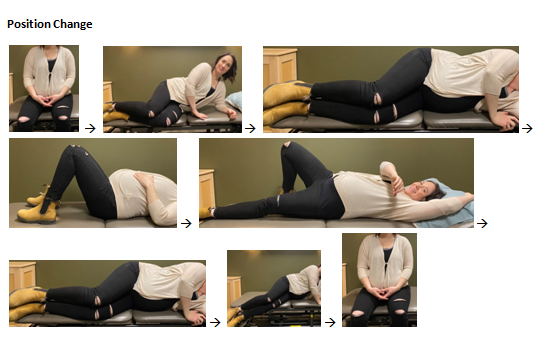Exercise will certainly be impacted during this time, but I’m talking about even the most basic things; like how you physically perform the movement of getting in and out of bed.
Being a physical therapist, I consider the movements that I perform on a daily basis, and how I am performing them. I make selections in my workout regime and decisions regarding activities that I participate in based on these questions that I pose to myself:
- What are the risks vs rewards?
- What are the consequences of this?
- What are the long term repercussions of this?
So let’s talk about how this applies to one of the most basic, routine things that we do every day, multiple times per day - Getting in and out of bed. This same concept is then applied to any time that we are moving from an upright position to a lying posture and the reverse.
We recommend rolling in and out of exercise positions (as seen below) and using the rolling sequence for positional changes to reduce the pressure on your anterior core. Our intent is to reduce the severity of diastasis recti, which is the natural separation of the linea alba (the connective tissue between your “six pack” abs) that occurs during pregnancy.
For most women we start to recommend this in the second trimester and advocate that you continue with these methods into your postpartum period.
Can we prevent rectus abdominis diastasis all together, nope (at least we don’t think so). Can we do our best to control some factors that may increase its severity, you bet!
Below is a sequence of postures that you can utilize to help reduce the load on your anterior core while you are pregnant. By reducing this pressure, we aim to eliminate excessive intra-abdominal pressure and prevent coning in the abdomen.
Coning looks like this:
~ Lindsay, PT



 RSS Feed
RSS Feed